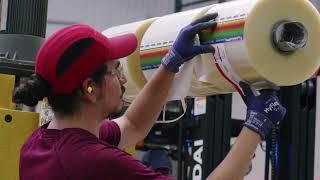Комментарии:

that's a stretch rope with a carbiner on it.
Ответить
👍👍
Ответить
vedawoo?
Ответить
I'm confused. You claim that you shouldn't use the daisy as a self anchor and it is only used in Aid climbing. Yet in the picture that you showed, the daisy is being hooked into the bolt, and it looks an awful lot like an anchor setup. Since many use this as an anchor, I do not, what is the difference in your picture of clipping it in as an anchor and using it for Aid climbing?
Ответить
Just to be clear, when you say “support” body weight—this means daisy chains are not ever meant to be the sole medium of holding one’s body weight, correct?
Ответить
I invented the Daisy Chain when I was a 13 year-old kid/7th-Grader working for Bill Forrest and Chris Walker at Forrest Mountaineering in Denver in 1970. Every day I would ride my bike over to Bill's "factory" in the basement of a house at 26th and Cherry Streets in Denver. The first one that I made was a series of 3" loops in a 6 foot circle of 1/2" blue tubular webbing that I bought by the foot at the Holubar store in Denver. At the time I was a very serious solo (self-belayed) aid climber and I used it as a way to rest and not have to call for tension if I happened to be climbing a vertical wall or roof with or without a partner. It was quite a help in resting between the placement of anchors. One day, I showed the creation to Bill Forrest and he suggested that we make and sell them. Shorty thereafter, we made them out of 3/4" and 1" black flat webbing. They were double looped through a Swami Belt and Leg Loops, thus providing a great way to have an additional belay anchor and/or a way to rest while aid climbing or Jumaring or prussiking. We put the Daisy Chain in the next catalog and It was a big hit, just like the Aid Copperhead nuts, Foxhead Nuts, Etriers/Stirrups and Tiny Tim Pack. The Daisy Chain was a name I randomly contrived that stemmed from some paper chains that a hot chick, Dina G., in my math class would make out of Juicy Fruit gum wrappers. She called them Daisy Chains. So...in effect, The Daisy Chain was invented by a 7th-grader who named it after a hot chick named Dina in a junior high math class in Denver in 1970. The bar-tacking between the loops tested-out at whatever the strength of the webbing that we used would hold. As I recall, 1" tubular held 4,000 pounds and 3/4" held 3,000 pounds. Never once did I/we at Forrest worry about tensile strength...EVER. Ahhh, The Good Old Days.
Ответить
Excellent video, thanks!!
Ответить
This video is wrong, except for pointing out the no-no on looping more than one loop on a daisy chain.
If you are at the anchor, do NOT put one locker in one bolt, then put another locking biner into the other biner. This defeats the purpose of daisy chain protection, GODDAMMIT! Instead, clip the other locking biner into the OTHER anchor bolt. If you only have two lockers, then put one in each bolt, and face them outward AWAY from the rock. If you have 4 locking biners, even better. Put one biner with the locker facing the rock, and the other one opposed, facing AWAY from the rock. Do this for BOTH anchor points, not just for one. You can use a daisy chain or webbing, but a daisy chain is going to be far more flexible to each top bolt anchoring scenario, especially if you are going to be top belaying as well. Better yet, use a cordellette!
IF you do not understand 100% of what I just told you, then do NOT proceed with any outdoor climbing until you do. Pick up a copy of John Long's book on climbing anchors. Read it cover to cover, and then read it again. Repeat after me: What is most important is REDUNDANCY! What is most important is REDUNDANCY! (No, that was no echo.)



























